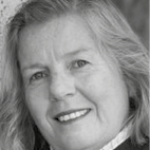I have been reading a lot lately about organizations with self-managing teams. But what is the difference between self-managing and self-organizing? Is it a matter of removing middle management, or is there more to it? How does servant leadership fit in? What about procedures, do they still exist? A selection of my questions that finally made me read THE book on self-management: Reinventing Organizations by Frederic Laloux, first published in 2014.
Laloux states in this excellent and inspiring book that a self-managing organization is a logical consequence of the evolution of human consciousness. In the 100,000 years that mankind has been around, we have gone through different phases of consciousness, in which we made leaps in how we lived, and how we saw ourselves and interacted with the world; leaps in cognitive, moral, and psychological skills. In the process, and the way we worked together, the model of our organizations, changed.
Organization models
The organization models in this book have colors. Via Infrared (families that gathered food), Magenta (tribes, led by the tribal elders and the shaman), Red (chiefdoms based on power) and Yellow (cities, states, religion, with rules to which people conform) we arrive at the current Orange structures. Orange began with the Industrial Revolution around 1800 and is dominated by performance, effectiveness, materialism, innovation, predictability, and control. Green emerged around 1960, and is focused on people’s feelings, respect, fairness, equality, pluralism, relationships. Within Green organizations we see consensus, empowerment, stakeholders, a values-driven culture, and an inspiring purpose.
Laloux describes the next phase in the evolution of human consciousness as the color Teal. Key words are authentic, integral, an inner framework of moral standards. We do not set life goals but “listen to life how it wants to be lived”. We look at what is there, not at what is missing. Not just ego, but wholeness. Oneness with nature, no judgement of another.
What would a matching Teal organization look like? You can see such an organization as a living organism, where every cell is self-managing, evolving. Self-managing is more than self-organizing because it’s not the CEO who makes the decisions; it’s the employees. The CEO supports and advises. Is this servant leadership? No, because servant leadership is nonsense according to Laloux, it is a pleonasm. In Teal, the CEO has no power, and the only form of leadership is servant leadership. Green does have servant leadership, combining a non-hierarchical culture with a hierarchical structure. Managers formally have power but are not allowed to use it, which is unnatural.
Structure and processes
Laloux searched for reasonably large, long-standing organizations that clearly reflect this new Teal consciousness, and selected 12 “pioneer” companies (including Buurtzorg, BSO/Origin, AES and Patagonia). It is remarkable that these companies are very successful (or have been successful in their Teal period). Laloux did extensive research into their organizational processes (such as strategy, marketing, sales, operations, budgeting, controlling), HR tasks (such as recruitment, training, evaluation, compensation) and critical everyday practices (such as meetings, information flows, office space). The book is full of examples of how this has been implemented in the 12 companies. Furthermore, it pays much attention to general principles and the culture at these companies.
This research makes the difference between Teal and Green organizations clear. In Green, a great deal of attention is paid to culture, but the (Orange) hierarchical structure and processes remain unchanged. Teal is based entirely on trust, rather than control. This implies that there are different structures and processes in place, for example, there is virtually no middle management. Other characteristics: teams are doing a lot themselves (hardly any staff functions); they can decide almost everything; there are no functions (small roles are dynamically distributed based on expertise and interest), and there is great transparency, focus on team performance etc.
Specific to Teal organizations is the advice process. Employees can make decisions themselves but must ask those involved, including the CEO, for advice. For example, a financial analyst at energy company AES in the US wanted to set up a branch in Pakistan and needed $200 million. The CEO advised against it, but the employee did it anyway. After 30 months, a power plant was up and running.
There are only two preconditions for setting up a new Teal company or transforming an existing organization into a self-managing one. 1) The CEO (or equivalent) must have a Teal consciousness, otherwise a Teal organization will fail. 2) Owners and Board members must understand and adopt Teal. Eckhart Wintzen’s BSO/Origin had been successful as a Teal company for 20 years, until, after a joint venture with Philips, it went to the familiar (for Philips’ managers) Orange in just a few months. Wintzen could not convince the new owners to adopt Teal.
Evolutionary
I found this a fascinating book. The subject may sound vague using terms like “consciousness” and “wholeness”, but the book is not vague at all. The Teal principles are explained in a very practical way, using examples of the forms that leadership, processes and structures can take. Evidently, there is no blueprint on how to apply self-management; it is about giving the “consciousness” and “wholeness” of your people all the space they need, allowing your organization to flourish in an evolutionarily way.
Self-management may sound chaotic to people who, like me, are used to fixed rules and procedures, authorization limits and other controls. This book shows that the Teal way of working is very structured, yet flexible and based on trust. But does self-management fit into an ERP system? How do you give all employees the right to do everything, such as investing $200 million? Buurtzorg could not work with existing software solutions because these were aimed at registration and declaration, not at supporting the daily activities of the care workers. Buurtzorg therefore developed its own software, Ecare, bought by VISMA in 2021. What will happen in other sectors? Imagine that your organization’s evolution is halted by your ERP system! That you become extinct …





